Author: Kim Kilian Suppan; Edited by: Tomáš Ginzel, Juraj Bystriansky
Introduction
Artificial intelligence has the potential to boost economic growth and is already reshaping industries worldwide. Yet, not every economy will contribute to or benefit equally from the AI revolution. Thus, it is often viewed as an “AI race” between nations, with Germany and Europe often viewed as laggards, facing structural challenges in technological adoption (OECD 2024). Still, certain European regions are considered emerging innovation hubs. Eastern Germany counts as one of those frontrunners. Most notably, the state of Saxony has emerged as a European semiconductor hub, defying broader national challenges (Huggins et al. 2023: 535). While South-Western states like Baden-Württemberg have dominated the “Industry 4.0” transition (Mitsch et al. 2024), Saxony is leading Europe’s AI industry (Silicon-Saxony 2025). This raises a key question:
How do the region-specific institutions and path dependencies of Baden-Württemberg and Saxony mediate the impact of disruptive technological transformations such as the AI boom since 2015?
This essay examines how intra-national differences shape regional trajectories through the lens of growth regimes. It challenges the notion of uniform national adaptation and emphasizes regional factors as units of analysis rather than treating national economies as homogeneous entities. The analysis demonstrates that regional differences in institutional structures, industrial specialization, and historical path dependencies mediate the impact of disruptive technological transformations. Germany provides a strong case to defend this assumption: first, because its federated governance allows states to determine their education systems, vocational training, and regional innovation policy; and second, because the country’s East-West divide persists across many metrics (Ragnitz 2005; Gramlich 2019), shaping each region’s path dependencies and regional competitive advantages.
First, the asymmetric impact of disruptive technologies is explained by assessing existing theories from Varieties of Capitalism, Evolutionary Economic Geography, and growth regimes. Second, a comparative analysis of Saxony and Baden-Württemberg is conducted to apply these theories to explain the structural asymmetries and divergent trajectories of each state. Lastly, I discuss how these findings align with existing PE literature and provide an outlook for East Germany’s role in an AI economy.
Theoretical Framework
The Institutional Mediation of Disruptive Technology
The notion that technological revolutions impact economies differently depending on their growth strategies and institutional structures is not new (Thelen 2020; Seidl 2023). For instance, the “digital revolution” or shift toward the knowledge economy transformed industries by placing education, innovation, and human capital at the core of economic growth (ibid.). Countries followed distinct growth strategies, each having to adapt to the transformative shift of digitalization based on the structure of their growth coalitions and historic sectoral strengths (Thelen 2020: 222). In Germany, the industrial coalition of unions and employers defended the “Industriestandort Deutschland”, sustaining its export-led model by digitalizing key industries (Thelen 2020; Hassel and Palier 2020; Baccaro and Höpner 2022). This growth model is enabled by distinct institutional configurations (Jackson and Deeg 2006: 6), including education systems of dual study programs and applied science universities. In contrast, Sweden moved into high-tech information and communication technologies while the Dutch turned to business services (Thelen 2020: 295). Thus, following theories of growth models and Varieties of Capitalism, the digital revolution was mediated by the institutional structures and politicaleconomic profiles of countries. Similarly, German regions adapt to the AI revolution differently depending on their regional competitive advantages and thus have divergent trajectories.
Diverging Regional Growth Regimes
However, to understand how the rapid advancement of AI technology affects different regions within Germany, regional growth regimes cannot be overlooked. While regional growth regimes operate within the national constraints of federal institutions (Mitsch et al. 2024: 8), regional differences in the “supply side institutions” such as education systems, human capital endowment and innovation policy all shape divergent trajectories of regions (Thelen 2020: 300). For instance, state-funded regional cluster policies are enabling tailored cooperation between firms and research institutions (ECCP 2023: 15), highlighting how regional autonomy shape the development of different innovation clusters across German regions.
Additionally, Evolutionary Economic Geography theory suggests that path dependencies and institutional embeddedness can be traced back to the regional level (Mitsch et al. 2024: 4). In Germany, industrial structures, education systems, and human capital can vary significantly by region (ECCP 2023; Ragnitz 2005; Mullis et al. 2016). These institutional settings are shaped by “regional growth coalitions” (firms, social partners, and state-governments), to facilitate regional competitive advantages (Mitsch et al. 2023: 9). For instance, university-industry collaboration can align education programs with industry-specific needs (ibid: 26), facilitating innovation and human capital endowments. Thus, a region’s capability to adapt to disruptive technologies depends on the interplay of institutions that shape their regional growth regimes. Altogether, theory confirms that growth regimes mediate the impact of disruptive technological transformation in distinct ways.
Asymmetrical Impact of Disruptive Technologies
Overall, regional growth regimes are underpinned by path dependencies, institutional structures, and regional growth coalitions (ibid.). The interplay of these factors determines the competitive advantages and sectoral dominance of regions. As a result, regional growth regimes play a key role in mediating the impact of disruptive technological advancements such as the AI revolution. For instance, Region A (Table 1) historically focused on microelectronics and has abundant specialized human capital in this niche industry. Each Regional Factor may present a competitive advantage of one region over the other. In the context of the AI Revolution, Region A’s historical industrial focus on microelectronics may be a competitive advantage. For “Industrie 4.0” Region B’s high-tech manufacturing base and specialized workforce are competitive advantages.
Regional factors may also inhibit a region’s ability to adapt to disruptive technologies: Region B may be less successful in adapting to the AI boom due to regional institutional structures and sunk costs that create “path-dependence lock-ins” (Eitan and Hekkert 2023: 1-4), preventing firms from adopting structural changes. If Region B is heavily invested in manufacturing infrastructure or has a long-standing vocational training system that is tailored to its traditional industry leaders, it potentially disincentivizes disruptive innovation due to reduced flexibility from past choices (Eitan and Hekkert 2023: 2). The interplay of these different regional factors may either advantage or disadvantage a region in mediating the impact of the AI revolution. Consequently, it is to be expected that regions’ distinct regional factors and institutional configurations are reflected in an asymmetric impact of the AI revolution.
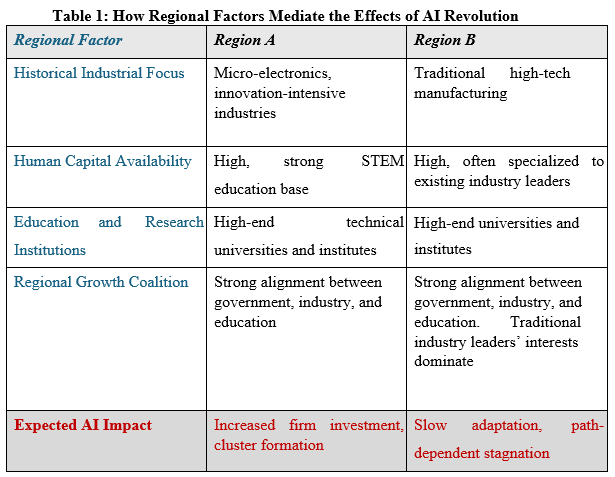
Comparative Analysis
The AI Revolution in Baden-Württemberg and Saxony
Germany’s transition to the knowledge economy demonstrated how regional advantages lead to divergent regional trajectories, with South-Western regions dominating the Industrie 4.0, outperforming every other region (Mitsch et al. 2024). Now, the AI Revolution is revealing the regional competitive advantages of East German regions. Baden-Württemberg and Saxony present ideal cases for comparison, as Baden-Württemberg has led Germany through the digital revolution, while Saxony is leading in the “AI revolution”. In the following, both regional growth regimes are compared to show that each region’s path dependencies and institutional structures mediate the impact of disruptive technological revolutions like the AI boom since 2015.
Baden-Württemberg: Stuck in Success?
Historically, Baden-Württemberg has been a critical center for SMEs, the automotive industry, and engineering innovation. In fact, Baden-Württemberg has the “most senior” SMEs, averaging 26 years of age (Figure 1: Appendix), with firms concentrated in sectors of machinery, vehicles, electronics, and other manufacturing (Figure 2: Appendix). This demonstrates the region’s embeddedness in hightech industrial production and advanced manufacturing. Considering Germany’s dependence on the export of high-value manufacturing goods (Di Carlo et al. 2024: 3), Baden-Württemberg is central to Germany’s national growth strategy and economy. Baden-Württemberg dominated the country’s transition into the knowledge economy and “Industrie 4.0”, leveraging strong regional growth coalitions, focused R&D investment, highly skilled workforce development, and large researchoriented companies (Mitsch et al. 2023).
Yet, Baden-Württemberg’s longstanding position as a manufacturing and innovation leader does not translate into a leading role in the AI revolution. In fact, Baden-Württemberg’s reliance on manufacturing and its old SMEs may be an “innovation break”: the region’s growth regime has been characterized by incremental innovation and established manufacturing sectors underpinned by vocational training systems and applied science universities. While Baden-Württemberg has strong SMEs, great R&D capacities, and well-organized growth coalitions (Mitsch et al. 2023), its innovation remains path-dependent on high-tech manufacturing and the automotive industry. This limits rapid adaptation to disruptive technologies like AI.
For instance, Baden-Württemberg’s prioritization of dual university programs and universities of applied sciences supports firm-specific skills and long-term employment. While this supports existing industry leaders, it does not facilitate risk-taking and entrepreneurship associated with AI innovation and AI business startups. According to the OECD, a “limited appetite for risk” is one of Germany’s main weaknesses in the context of the AI boom (OECD 2024: 18). Thus, BadenWürttemberg’s institutional structures are sub-optimal for the demands of a rapidly evolving AI technology.
Furthermore, the economic and transformative success of Baden-Württemberg and SouthWestern regions throughout the digital revolution is not purely the outcome of innovation capacity or regional factors. Instead, Germany's past East-West divide also plays a role: about 75% of the productivity gap in East Germany’s manufacturing sector stems from its post-reunification firm structure and limited investment by West German firms (Ragnitz 2005: 4). Baden-Württemberg and Bavaria also massively profited from young skilled workers migrating from the East to the West (ibid: 5), boosting the presence of a young skilled workforce in these regions.
Southwestern regions remain the leader of German innovation overall: With 13,444 patent applications, Baden-WÜRTTEMBERG is Germany's innovation leader by a large margin (Figure 3: Appendix). By contrast, Saxony applied for 592 patents (ibid.). Baden-Württemberg and its neighbor, Bavaria, also lead in regional cluster development (Figure 4: Appendix) and its companies, Robert Bosch, Mercedes-Benz, and BMW, remain the engine of Germany’s growth model. However, the economic success of Baden-Württemberg relies on the region’s growth coalition of established industry leaders and vocational institutions, which are embedded in the traditional high-tech manufacturing sector. Its vocational training needs to be re-adjusted to support AI-specific competencies and specific digital skills, which is challenging considering that manufacturing sectors dominate the training.
In conclusion, Baden-Württemberg remains a leader in innovation and high-tech manufacturing. Yet, the very factors that underpinned the region’s success have become a structural constraint, limiting its capacity to adapt to emerging sectors like AI: its educational system is overly focused on supporting its existing industry champions, and its strategy of incremental transformation throughout the digital revolution hinders disruptive innovation. Thus, path-dependent lock-ins emerge, where institutional structures hinder diversification into emerging technologies like AI.
Saxony: Germany’s Silicon Valley?
Contrasting the South Western region’s reputation as innovation leaders and high-tech manufacturing, East Germany has a reputation for being a stronghold of the far-right extremist party AfD (Erlanger and Scheutze 2024) and an economically weak successor of the former socialist GDR (Gramlich 2019; Ragnitz 2005: 6). As rapid advancements in AI technology boost the demand of semiconductors (Burkacky et al. 2024), the Eastern State of Saxony is becoming one of Germany’s most important regions in driving this technological transformation. Saxony already produces every third European semiconductor chip in Europe (Silicon-Saxony 2025), and EU’s largest chip factory plant stands in Dresden, Saxony’s capital (Miller 2021). With over 600 members, the association “Silicon-Saxony e.V”, represents Germany’s largest microelectronics and IT cluster (Silicon-Saxony 2025) and ranks third in the number of profiled cluster organizations, closing the gap on Baden-Württemberg (Figure 4: Appendix).
Simultaneously, the European Chips Act (EU 2023) aims to “home-shore” EU’s chip production to become more strategically autonomous. East German regions have profited most from this: more than 20 billion euros in combined public and private investment have been committed to the region (Greive et al. 2023; Ersen and Sterling 2024; European Commission 2025). Multinational chip producers have decided that Saxony is the place to invest. TSMC will build its first European fab (€10 billion), Infineon is setting up a new semiconductor facility (€3.5 billion), and GlobalFoundries is expanding its presence in Dresden (€8 billion) (ibid.). In each case, the German state provided substantial financial support through subsidies, often co-funded under the framework of the EU Chips Act (European Commission 2025). This shows that the EU’s Chips Act and Germany’s commitment to strategic industrial policy are reinforcing Dresden’s central role in Europe’s pursuit of technological sovereignty.
Saxony’s leadership in semiconductors is not accidental. Neither are the investment decisions by firms. As with Baden-Württemberg’s success in the Industrie 4.0 transition, it is the result of regional competitive advantages. Baden-Württemberg profited from well-coordinated regional growth coalitions, firm-specific skill development, and skilled workers' migration from the East. Saxony’s unique institutional structure and history thereof explain its leadership in today’s AI revolution.
Just as Baden-Württemberg’s historic industrial focus on high-tech manufacturing and automotive production, Saxony has been an industrial hub for microelectronics dating back to the 1960s (Berkner 2016). Facing Western technology embargoes, the GDR was forced to develop its own chip production capacity early (ibid.). Yet, as a planned economy, its technology innovation, on average, was less advanced and efficient relative to West Germany (Fritsch et al. 2023: 4-6). Thus, the GDR’s semiconductor technology was not on par with its Western counterpart (Berkner 2016). Despite these constraints (embargoes), and inefficiencies (planned economy), the GDR innovated and built its own semiconductor industry somewhat successfully: during the 1980s, the GDR produced its first microprocessor only four years after the Americans (Berkner 2016), a remarkable achievement considering the GDR’s limited access to Western technology, resource constraints and isolation under the embargo (Fritsch et al. 2023: 5). By aligning its academic specialization with its national industrial focus, a majority of GDRs students enrolled in engineering sciences (Hahn 1972: 70). The Technical University Dresden emphasized applied and production-related research (ibid: 70-71), further facilitating specialized expertise needed for Dresden’s microelectronic industry.
Amid reunification, the rapid privatization by the Treuhand Agency (Ragnitz 2005: 4) and lack of competitiveness of Eastern firms (Fritsch et al. 2023) put many East German manufacturers out of business (Haeck 2023). Thus, a large base of highly skilled workers specialized in microelectronics became unemployed (ibid.), leaving a large resource pool of human capital. Saxony’s regional advantages became obvious to Western firms: by 1994, Siemens AG set up a local microchips branch in Dresden, and American manufacturer AMD followed suit in 1996 (Haeck 2024). Despite general reluctance of Western firms to invest in the East (Ragnitz 2005: 4), Saxony’s semiconductor sector was a clear exception, due to its strong basis of specialized skilled labor, technological infrastructure, and industry-oriented education. From a firm perspective, setting up these institutional structures and capabilities from scratch in the West would have wasted resources and finances and may have been impossible in the first place. Concluding, Dresden became the favored investment destination for leading chip producers, laying the groundwork for what is today “Silicon Saxony”.
Though not included in Table 2, geographical advantages are another mediating factor. For instance, an average chip manufacturing facility today can use 10 million gallons of ultrapure water (James 2024), meaning proximity to freshwater sources presents a critical locational advantage for semiconductor clusters. Thanks to the Elbe River flowing directly through Saxony, Dresden and its microelectronic clusters have no shortage of abundant freshwater. Thus, the city of Dresden has invested over €320 million in a new industrial water system with river water to sustain its growing chip industry (Silicon-Saxony 2023). The geography of Saxony further highlights its regional advantage vis-à-vis Baden-Württemberg in the AI revolution.
Compared to Baden-Württemberg, East German regions remain economically lagging and politically volatile (Ragnitz 2005; Erlanger and Scheutze 2024). Yet, Saxony has emerged as a leader in Europe’s semiconductor production, producing one-third of its chips and attracting major investments. Saxony’s early microelectronics innovation, specialized engineering education, and geographical advantages all shaped its rise. Whether Saxony will remain Europe’s semiconductor capital will depend on its competitiveness, but it is unlikely that a Western region will be able to replicate its regional advantages (Table 2).

Discussion and Conclusion
Overall, the analysis suggests that distinct regional growth regimes mediate the impact of the disruptive technologies: the AI revolution has asymmetrical regional effects, with Saxony emerging as a European frontrunner to produce semiconductor chips while Baden-Württemberg faces adaptation constraints. Each regime is underpinned by distinct historical industrial focuses, institutional structures, and growth coalitions, shaping its future trajectory and adaptation capabilities to exogenous shocks like the AI boom. These findings are original and impactful, considering most studies on the effects of AI are very recent, national-level, and overlook regions like Saxony.
It highlights that regional factors are a key unit of analysis for understanding how disruptive technological revolutions or shocks affect regions differently within a single national economy. This aligns with Mitsch et al. findings, who emphasize the role of regional growth coalitions and regionspecific institutional dynamics in shaping distinct regional trajectories (2024: 28-29). It also supports De Ville’s and Vermeiren’s argument, who show that external shocks asymmetrically affect regions due to institutional variation (2016: 572). However, this paper challenges the notion that external shocks produce uniform effects within national economies, highlighting their differentiated regional impact.
Lastly, the relative competitive advantages of Saxony should not suggest that Eastern Germany will make the EU the new leader in AI: as Huggins et al. correctly note, the European semiconductor industry is in relative decline over the last 30 years. (2023: 542-545). To what extent Saxony can expand and innovate its semiconductor industry and boost Europe’s global stance in the AI race depends on its competitiveness and other factors that go beyond the scope of this paper.
In conclusion, the findings show that disruptive technological transformations have asymmetrical regional effects within national economies. The cases of Saxony and Baden-Württemberg demonstrate how region-specific factors mediate the AI revolution’s impact, exposing each region’s economic potential or vulnerability (Table 2). While Baden-Württemberg remains a leader in innovation and high-tech manufacturing, it faces constraints in the context of the AI revolution. By contrast, Saxony is rising in strategic importance for Europe’s mission to achieve “chip sovereignty”. Its relative semiconductor success stems from regional competitive advantages, including early state-led investments in microelectronics infrastructure during the GDR, and its supportive engineering-focused education at TU Dresden. Geographical advantages such as access to freshwater via the Elbe and strong alignment between national (federal state) and supranational (EU) industrial strategies further strengthen Saxony’s leadership in the semiconductor hub. Altogether, these regional advantages explain why it is “Silicon Saxony”, not “Silicon Württemberg” that has become Europe’s AI-chip powerhouse. Whether these large sums of public and private investment will accelerate East Germany’s economic revival and translate into sustained regional development remains to be seen, but the economic potential of the AI revolution for Eastern Germany should not be underestimated.
Bibliography
Atkinson, R.D. (2024). ‘China is Rapidly Becoming a Leading Innovator in Advanced Industries’ https://itif.org/publications/2024/09/16/china-is-rapidly-becoming-a-leading-innovator-in-advancedindustries/. Consulted on May 5 2025.
Baccaro, L. and Höpner, M. (2022) ‘The Political-Economic Foundations of Export-Led Growth: An
Analysis of the German Case’, in L. Baccaro, M. Blyth, and J. Pontusson (eds) Diminishing Returns.
1st edn. Oxford University PressNew York, pp. 238–267. Available at: https://doi.org/10.1093/oso/9780197607855.003.0010.
Berkner, J. (2016) ‘So entwickelte sich die Halbleiterindustrie in der DDR‘, https://www.allelectronics.de/elektronik-entwicklung/die-halbleiterindustrie-in-der-ddr-922.html. Consulted on May 6 2025.
Burkacky, O., Patel, M., Pototzky, K., Tang, D., Vrijen, R., and Zhu, W. (2024). ‘Generative AI: The next S-curve for the semiconductor industry?’ https://www.mckinsey.com/industries/semiconductors/our-insights/generative-ai-the-next-s-curvefor-the-semiconductor-industry?utm.com. Consulted on May 5 2025.
Capital Economics (2024) ‘AI, Economies and Markets- How artificial intelligence will transform the global economy’, https://www.capitaleconomics.com/ai-economies-and-markets-how-artificialintelligence-will-transform-global-economy. Consulted on May 5 2025.
De Ville, F. and Vermeiren M. (2016). ‘The Eurozone crisis and the rise of China in the global monetary and trading system: The political economy of an asymmetric shock’, Comparative European Politics, 14(5), pp. 572-603. Available at www.palgrave.com/journals.
Delcker, J. (2024) ‘Germany struggles to keep pace in the AI race’ https://www.dw.com/en/germanyis-falling-behind-in-the-race-for-ai/a-
69528180#:~:text=As%20artificial%20intelligence%20transforms%20industries,raising%20concern s%20about%20Germany's%20competitiveness. Consulted on May 5 2025.
Di Carlo, D., Hassel, A. and Höpner, M. (2024) ‘Growth Coalitions Within a Corporatist Setting: How Manufacturing Interests Dominated the German Response to the Energy Crisis’, Politics & Society, p. 00323292241292920. Available at: https://doi.org/10.1177/00323292241292920.
ECCP (2023) ‘European Cluster Collaboration Platform Country factsheet Germany’, https://www.clustercollaboration.eu/sites/default/files/2023-countryfactsheets/ECCPfactsheet_Germany_2023_Final.pdf.
Eitan, A. and Hekkert, M.P. (2023) ‘Locked in transition? Towards a conceptualization of pathdependence lock-ins in the renewable energy landscape’, Energy Research & Social Science, 106, pp.1-14. Available at: https://doi.org/10.1016/j.erss.2023.103316.
Erlanger S. and Schuetze F. (2024) ‘East Germans Lean Toward Extremes in State Election‘, https://www.nytimes.com/2024/09/01/world/europe/east-german-state-elections-saxonythuringia.html. Consulted on May 5 2025.
Ersen and Sterling (2024) ‘EU approves German state aid for 11 billion TSMC chip plant.
https://www.reuters.com/technology/eu-approves-5-bln-euro-german-aid-esmc-semiconductor-plantdresden-2024-08-20/. Consulted on May 6 2025.
EU (2023) ‘REGULATION (EU) 2023/1781 OF THE EUROPEAN PARLIAMENT AND OF THE
COUNCIL‘, https://eur-lex.europa.eu/eli/reg/2023/1781/oj. Consulted on May 6 2025.
European Commission (2025) ‘Commission approves €920 million German State aid measure to support Infineon in setting up a new semiconductor manufacturing facility‘ https://ec.europa.eu/commission/presscorner/detail/en/ip_25_557. Consulted on May 6 2025.
Fritsch M., Greve M., and Wzrwich M. (2023) ‘Shades of a socialist legacy? Innovation activity in East and West Germany 1877-2014’, Jena Economic Research Papers, pp.1-56. Available at: https://hdl.handle.net/10419/268242.
Furman, J., and Seamans, R. (2019). ‘AI and the Economy’, Innovation Policy and the Economy, 19(1), 161–191. https://doi.org/10.1086/699936.
GPTMO (2022) ‘German Patent and Trade Mark Office Annual Report 2022‘.
https://www.dpma.de/docs/english/jahresberichte/dpma_jb2022_engl_nichtbarrpdf.pdf. Consulted on May 6 2025.
Grammlich, J. (2019) ‘East Germany has narrowed economic gap with West Germany since fall of communism, but still lags’, https://www.pewresearch.org/short-reads/2019/11/06/east-germany-hasnarrowed-economic-gap-with-west-germany-since-fall-of-communism-but-still-lags/. Consulted on May 5 2025.
Greive M., Hofer, J., and Olk, J. (2023) ‘Chip-Konzern will acht Milliarden Dollar in Dresden investieren’, https://www.handelsblatt.com/technik/it-internet/globalfoundries-chip-konzern-willacht-milliarden-dollar-in-dresden-investieren/29410598.html. Consulted on May 6 2025.
Haeck (2024) ‘How Dresden became Germany’s Chips City’ https://www.politico.eu/article/germany-chips-city-dresden-microchips-cars-smartphones/. Consulted on May 6 2025.
Hahn, W. (1972) ‘Education in East and West Germany a study of similarities and contrasts’, Studies in Comparative Communism, 5(1), pp. 47–79. Available at: https://doi.org/10.1016/00393592(72)90014-2.
Hassel, A. and Palier, B. (2020) ‘Tracking the Transformation of Growth Regimes in Advanced Capitalist Economies’, in Hassel, A. and Palier, B., Growth and Welfare in Advanced Capitalist Economies. Oxford University Press, pp. 3–56. Available at: https://doi.org/10.1093/oso/9780198866176.003.0001.
Huggins, R., Johnston, A., Munday, M. and Xu, C. (2023) ‘Competition, open innovation, and growth challenges in the semiconductor industry: the case of Europe’s clusters’, Science and Public Policy, 50, pp. 531-547.
Jackson, G. and Deeg, R. (2006) ‘How Many Varieties of Capitalism? Comparing the Comparative Institutional Analyses of Capitalist Diversity‘, MPIfG Discussion Paper, 6(2), pp.1-47. Available at http://dx.doi.org/10.2139/ssrn.896384.
James, K. (2024). ‘The water challenge for semiconductor manufacturing: What needs to be done?’, https://www.weforum.org/stories/2024/07/the-water-challenge-for-semiconductor-manufacturingand-big-tech-what-needs-to-be-done/. Consulted on May 6 2025.
Marangoni, G. and Solari, S. (2006) ‘Flexible Specialisation 20 Years On: How the “Good” Industrial Districts in Italy Have Lost Their Momentum’, Competition & Change, 10(1), pp. 73–87. Available at: https://doi.org/10.1179/102452906X92019.
Miller, J. (2021) ‘Silicon Saxony’ aims to be EU chipmaking hub’ https://www.ft.com/content/75841b94-196e-466f-ad1b-72d3809c33fc. Consulted on May 5 2025.
Mitsch, F., Hassel, A. and Soskice, D. (2024) ‘Southern Germany’s Innovation Clusters: Regional Growth Coalitions in the Knowledge Economy’. International Inequalities Institute, Working Paper, pp.1-33.
Mullis, I. V. S., Martin, M. O., Goh, S., & Cotter, K. (Eds.) (2016). Education Policy and Curriculum in Mathematics and Science. Retrieved from Boston College, TIMSS & PIRLS International Study Center Available at: http://timssandpirls.bc.edu/timss2015/encyclopedia/.
Na, N. and Zhu, S. (2024) ‘Transforming industries with AI: Lessons from China’s journey’.
https://www.weforum.org/stories/2025/01/transforming-industries-with-ai-lessons-fromchina/#:~:text=China's%20progress%20in%20AI%20is,solid%20foundation%20for%20AI%20appli cations. Consulted on May 5 2025.
OECD (2024) ‘OECD Artificial Intelligence Review of Germany’ https://www.oecd.org/en/publications/2024/06/oecd-artificial-intelligence-review-ofgermany_c1c35ccf.html. Consulted on May 5 2025
Ragnitz, J. (2005) : ‘Fifteen years after: East Germany revisited’, ifo Institut für Wirtschaftsforschung an der Universität München, 60(4), pp. 3-6. Available at: https://hdl.handle.net/10419/166244.
Schwartz and Gerstenberger (2018) ‘Regional faces of Germany’s SMEs: a state-by-state comparison’, https://www.kfw.de/About-KfW/Service/Download-
Center/Konzernthemen/Research/KfW-Mittelstandsatlas/. Consulted on May 5 2025.
Seidl, T. (2023) ‘Investing in the knowledge economy: The comparative political economy of public investments in knowledge‐based capital’, European Journal of Political Research, 62(3), pp. 924– 944. Available at: https://doi.org/10.1111/1475-6765.12546.
Silicon-Saxony (2023) ‘State Capital Dresden and Sachsenenergie: New River Waterworks’, https://silicon-saxony.de/en/state-capital-dresden-and-sachsenenergie-new-river-waterworks-on-theelbe-decouples-water-supply-for-industry-and-population/?utm_source=chatgpt.com. Consulted on May 5 2025.
Silicon-Saxony (2025) ‘Silicon Saxony – Where Technology Connects’ https://silicon-saxony.de/en/. Consulted on May 5 2025.
Thelen, K. (2020) ‘Transitions to the Knowledge Economy in Germany, Sweden, and the
Netherlands’, in Thelen, K., Growth and Welfare in Advanced Capitalist Economies. Oxford
University Press, pp. 203–226. Available at: https://doi.org/10.1093/oso/9780198866176.003.0006.
Appendix: Supporting data and figures
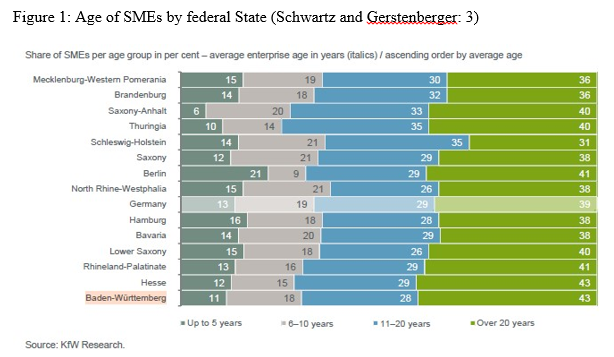
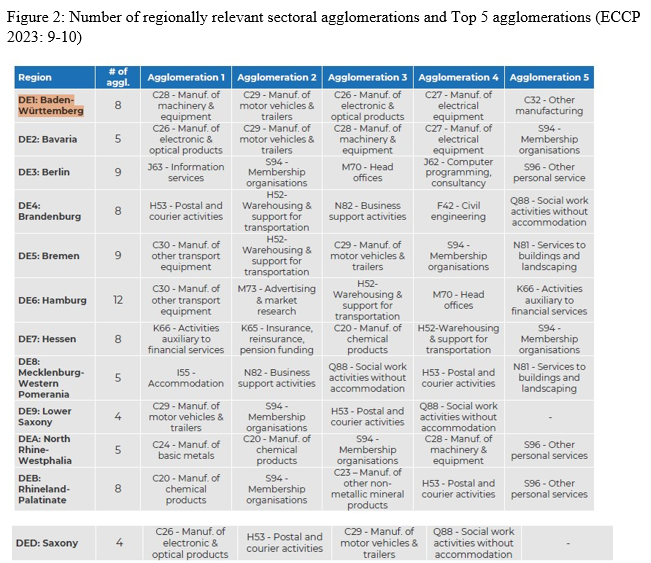
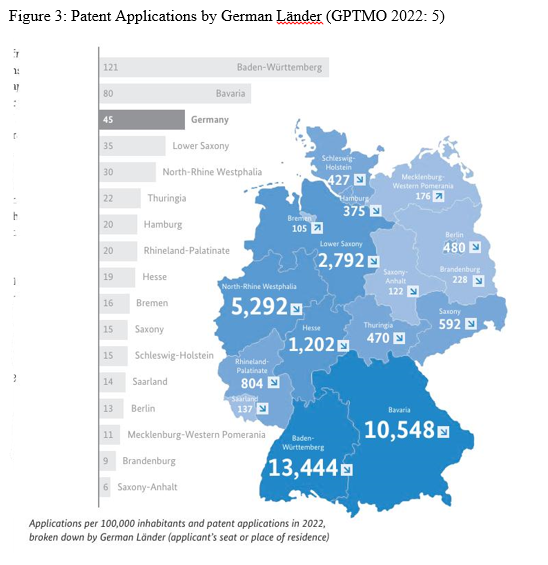
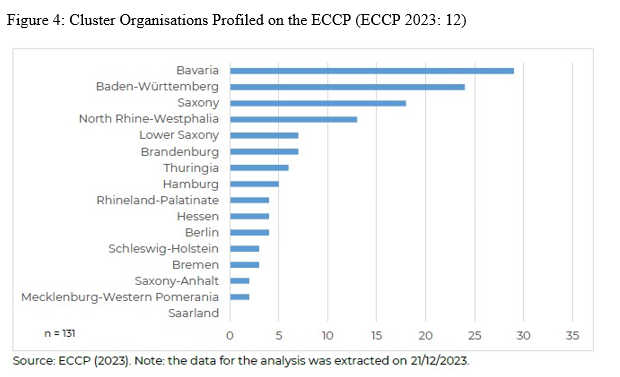
Add comment
Comments